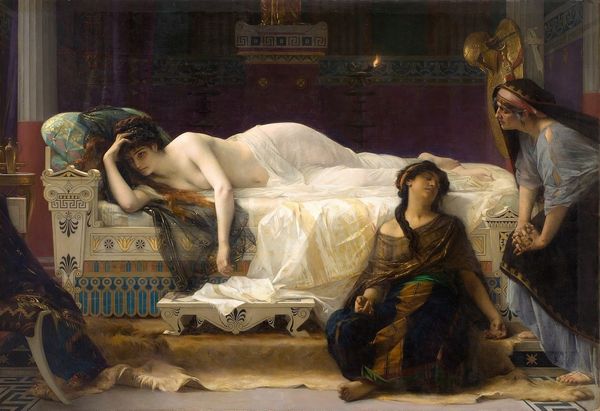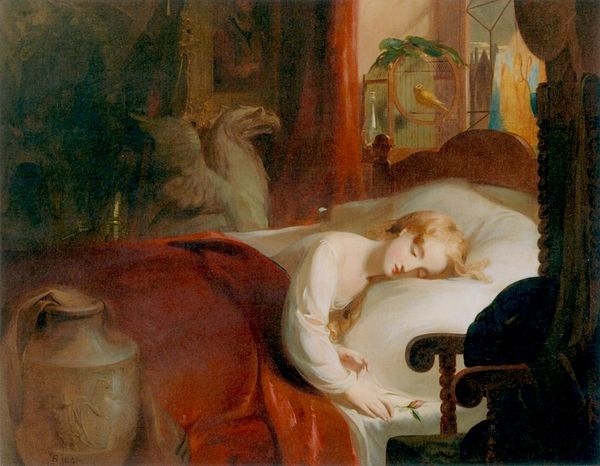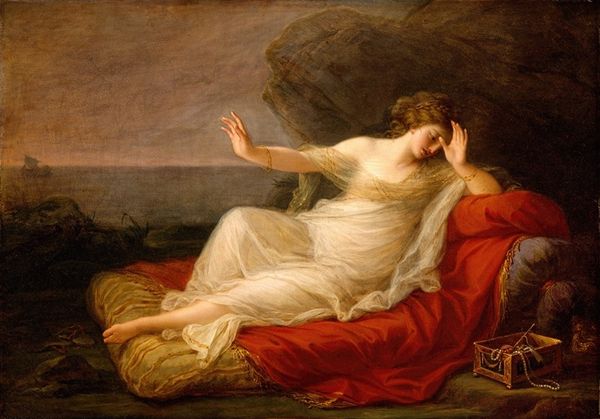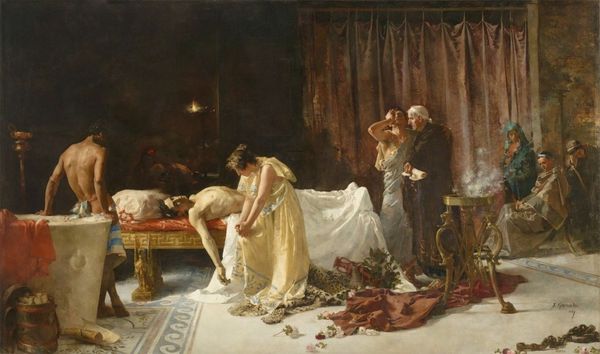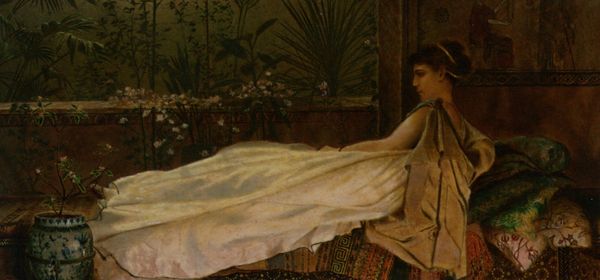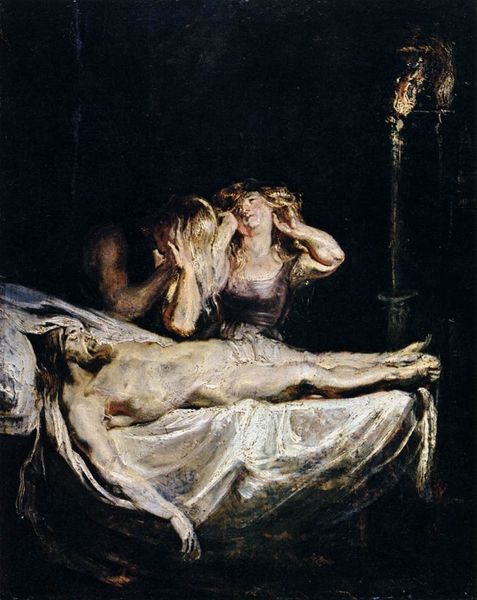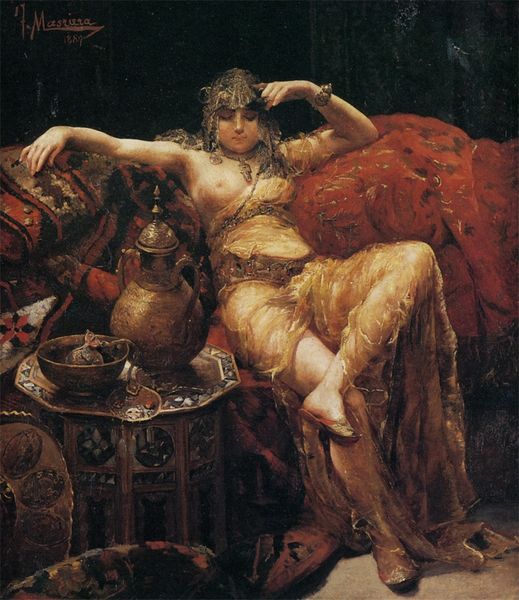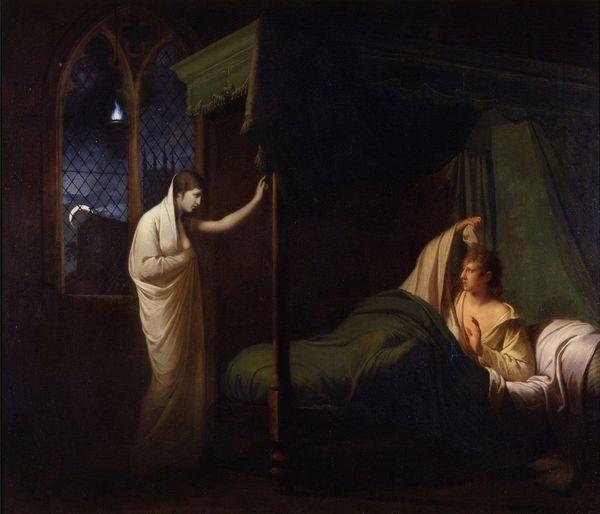
Dimensions: 69.85 x 90.81 cm
Copyright: Public domain
Editor: Here we have John William Waterhouse's "Sleep and His Half Brother Death" from 1874, made with oil paint. I'm immediately drawn to the contrast between the figures—the relaxed repose of Sleep versus the…well, almost stiff surrender of Death. How do you interpret this work? Curator: It's tempting to focus solely on the mythological subject matter, but I'm more interested in what the *making* of this piece reveals about Victorian society. Look closely at the materiality: the heavy, draped fabrics, the carefully rendered textures of skin and marble, the sheer amount of pigment. Who had access to these materials, and whose labor produced them? Editor: That's an interesting way to frame it. I hadn’t considered the societal implications of the materials themselves. Curator: Exactly! The choice of oil paint, for example, suggests a certain level of patronage and access to resources not available to everyone. And consider the act of depiction. Why idealize these figures from mythology, essentially turning them into commodities for visual consumption? Who was the intended audience? Were these themes and production relevant for the common people of that time? Editor: So you're saying that the painting is as much about class and power as it is about sleep and death? Curator: Precisely! By analyzing the materials, labor, and modes of representation, we can unpack the social context in which this artwork was produced and consumed. This helps us get rid of that aesthetic filter to consider some realities and cultural themes. Editor: I never thought of it that way. Looking at the work now, it has unlocked all these layers. Curator: It’s a refreshing way to go beyond conventional art interpretations, isn’t it? Hopefully more people will use this framework in art to analyze how pieces are not neutral!
Comments
No comments
Be the first to comment and join the conversation on the ultimate creative platform.
